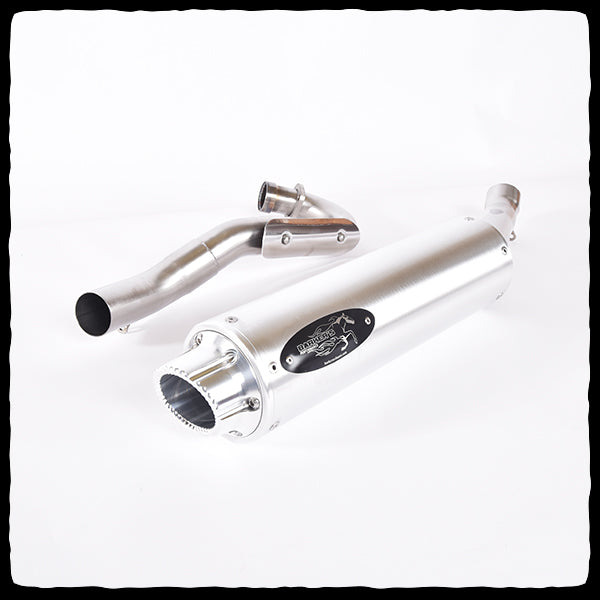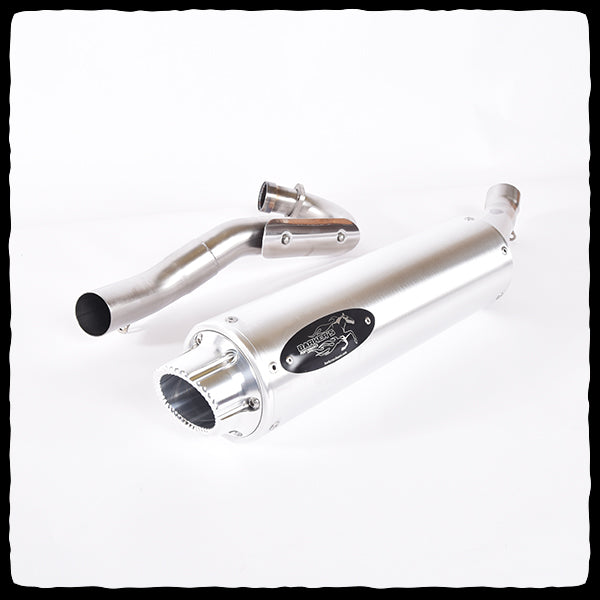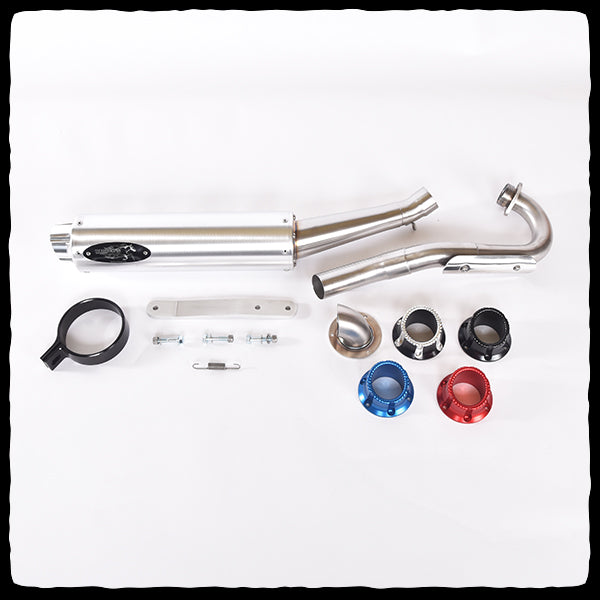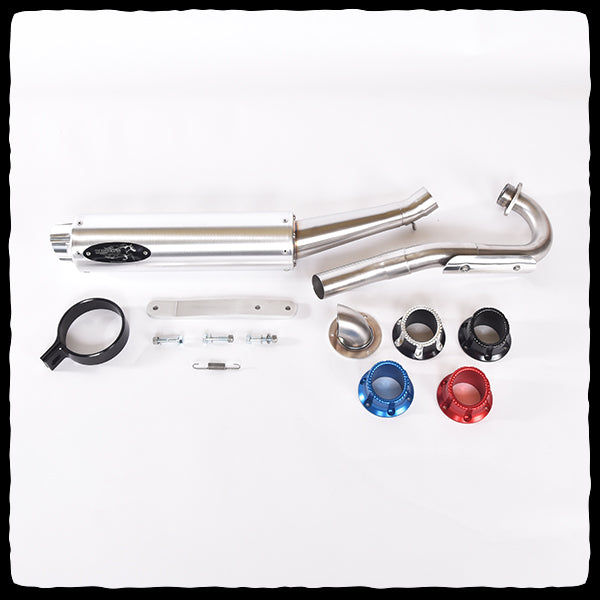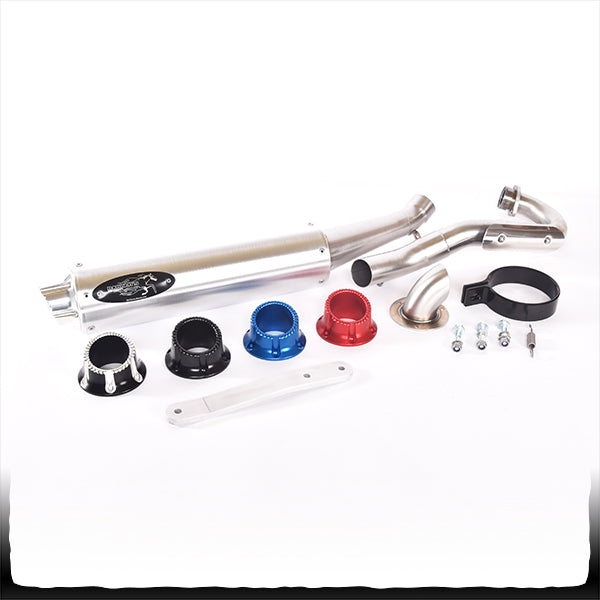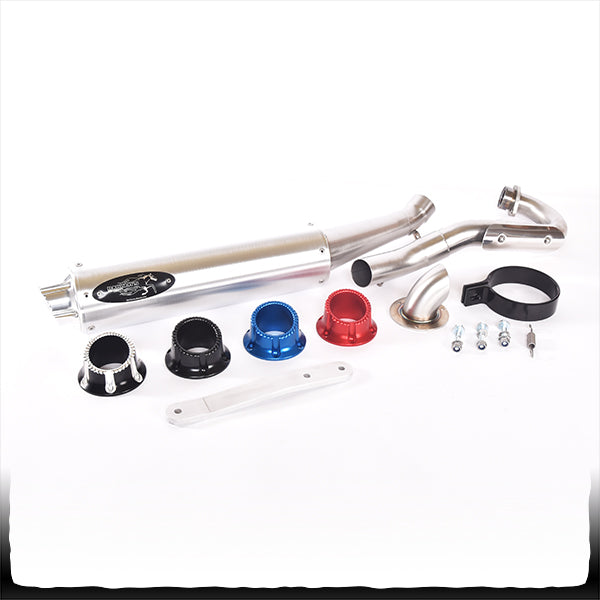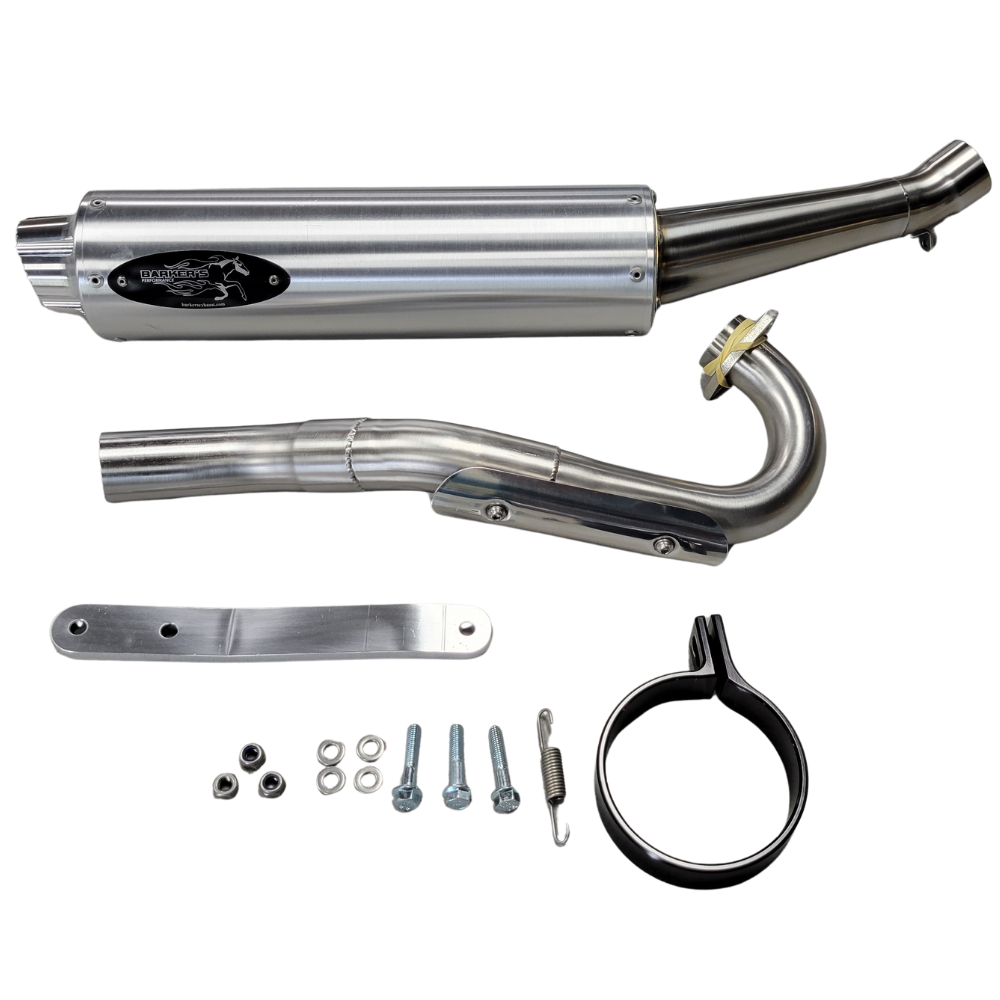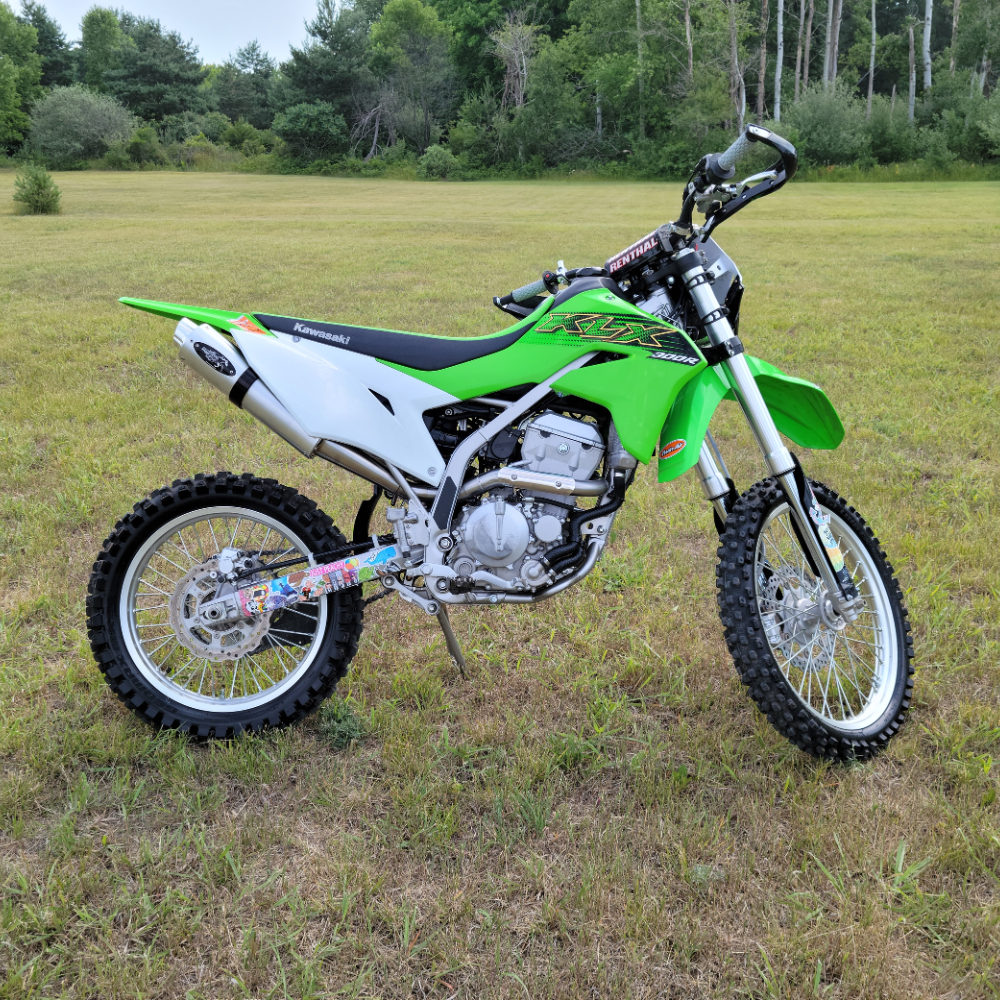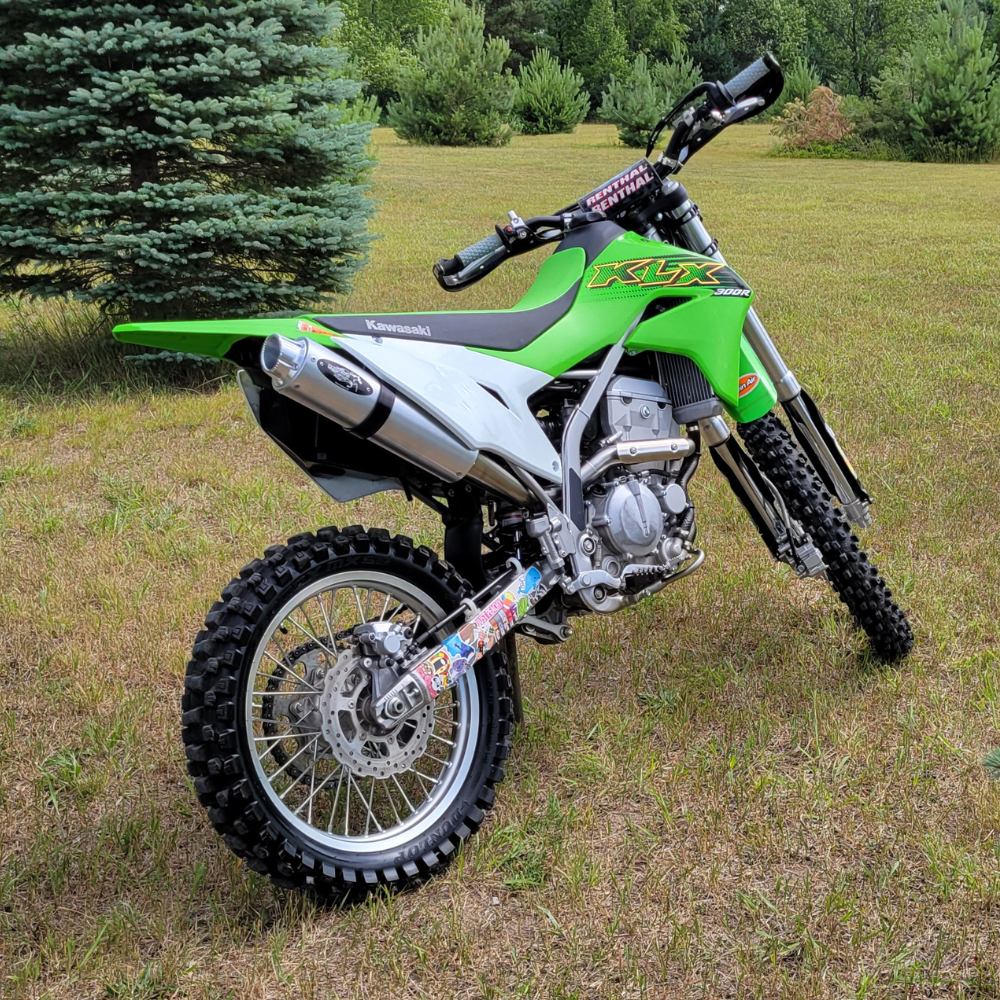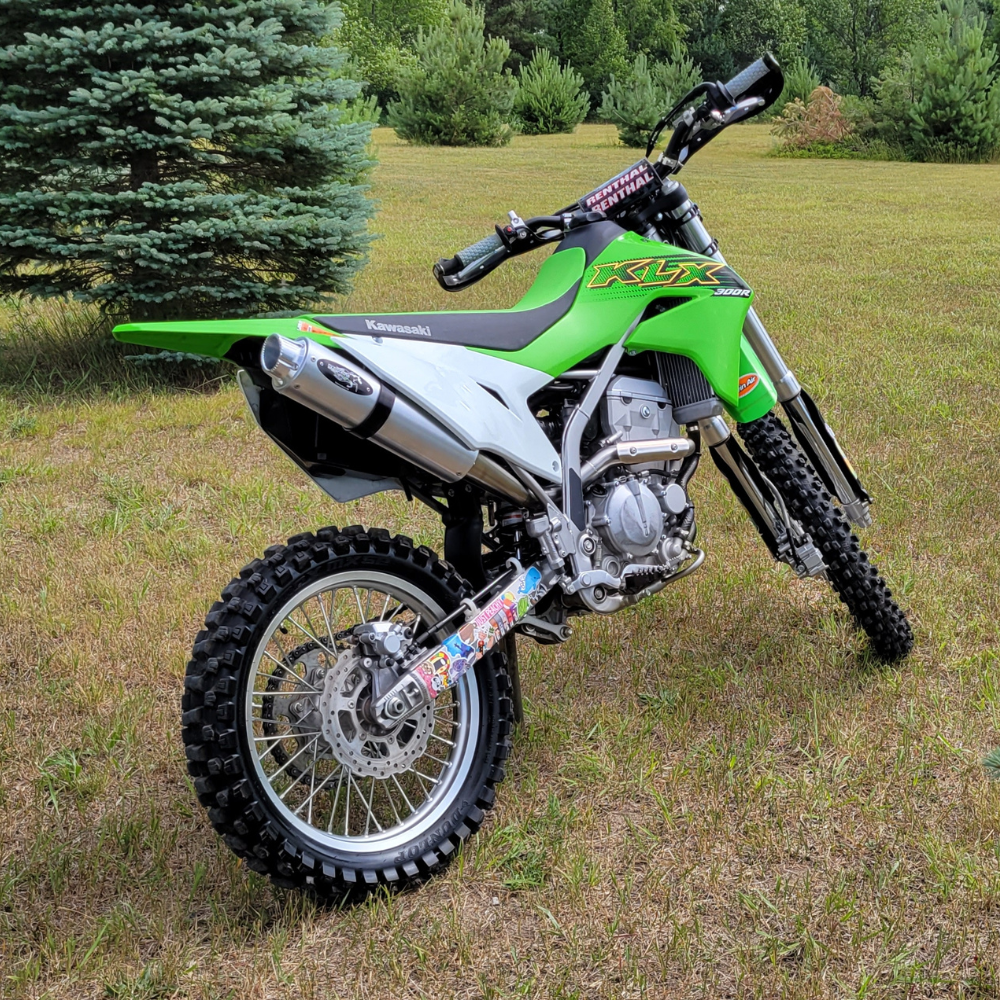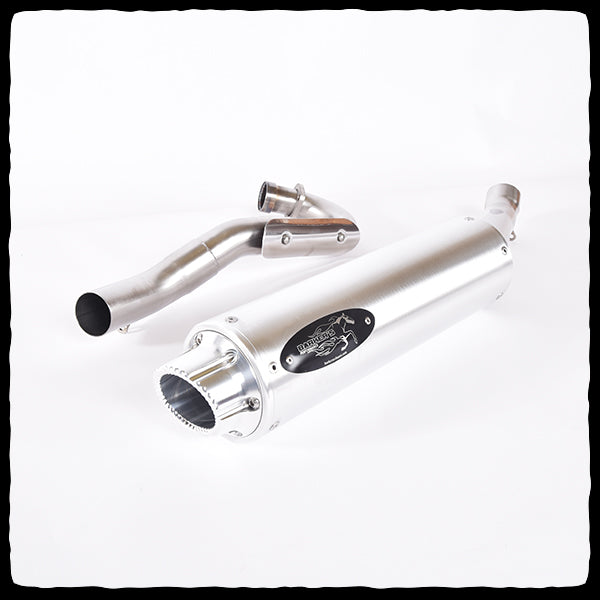Kawasaki KLX300R Full Single Exhaust System 2000-2025
Kawasaki KLX300R Full Single Exhaust System 2000-2025 is backordered and will ship as soon as it is back in stock.
Couldn't load pickup availability
Snapshot Kawasaki KLX300R Features:
- Fits 2020-2025 KLX300R Models (300SM/DS exhaust can be found here)
- Comes standard with a 14" round silver muffler, black tag, and a silver billet tip
- Upgrades available include black powder-coat on the muffler, different tag colors, and different tip configurations
- A black billet exhaust clamp and support bar to strengthen the exhaust perch mount are included
- 13% Peak Power Increase
- 15-30% Power Increase over 8000 rpm
- Tuned megaphone-style headpipe
- 6lb weight reduction over the stock pipe
- Optional Add-Ons: Quiet Core, Spark Arrestor, Power Commander PC6, EHS Racing Fuel Controller
The Full Story:
The KLX300R will prove to be a popular bike with the off-road crowd looking for a more tame and maintenance-friendly 4-stroker in place of the typical 250f/450f motocross race bike. The power, however, could still use some improvements to really make this bike a riot on the trails. Working alongside the development of our 2021 KLX 300SM, we built a fresh pipe to suit the extremely popular “R” model. Much of the story behind the KLX300R and the SM/DS models is the same when it comes to the development; however, there are some definite differences between the two bikes and their power delivery.
Working with LaBaron’s Power Sports and their Dynojet 168R chassis dyno, we got to work developing our pipe for the 300R, looking to gather all the data and build custom fuel maps to suit the R model. Upon finishing our KLX300SM pipe, we were very curious to see how the 300R performed in comparison.
In stock form, the bike made 24.18hp but signed off abruptly after 8000 rpm. Fuel tuning was hit or miss, especially in the low end. Once the exhaust was installed, we noticed immediately that the area above 8000 rpm improved significantly. Low-end power was improved in some areas, but the already lean fueling caused some loss of power in the extreme low end. We determined that the exhaust is safe to run with stock fueling but only if the airbox remains 100% stock, as opening the lid will lean out the low-speed fueling too much and cause issues.
Tuning the bike’s fuel trims resulted in significant improvements in rideability and peak power both with and without the airbox lid in place. We developed two Power Commander 6 maps, one for a stock lid setup and the second for a KDX 200 snorkel or open lid configuration. The EHS Fuel Controller option also fixes the lean conditions down low. Running the fully open lid produced peak power, but the KDX option is so close that it’s also a very good option to fully utilize the most gains vs. the stock snorkel.
Being that we had a unique opportunity to dyno the R & SM almost back to back, we figured we’d note the differences between them. The R really has a much more linear power curve from down low right up to the 8,000rpm mark compared to the SM’s “2-stroke style” power curve. However, the R version seems to drop off after 8k, even sharper than the SM model. The 300R in stock form comes out of the gate with a good 3-4 more peak and more down low, but clearly the SM likes to run up in the higher rpm’s where its best power lies. We’re sure this was planned in the cam profiles designed by Kawasaki based on the application of the two bikes. We were very pleased to achieve nice performance gains in both versions of Kawasaki’s new 300 platform.
In summary, on the KLX300R, the Barker’s pipe, along with a modified or removed airbox lid and fuel controller, gained 3.5 more peak horsepower. Above 8,000 rpm, the power is carried much further and achieves 6.5 more hp at redline and a solid 2-3 more hp from 4,000 and up. Fuel tuning with either the PC6 or EHS controller and opening up your intake is recommended to achieve the maximum possible bolt-on power gains. This setup takes the green machine from a bit lazy and sometimes underwhelming to much more punchy and persistent.
Independent Dyno Tuning & Testing completed by LaBaron's Power Sports in Brown City, MI, and EHS Racing in Rockingham, NC.
-
Item Condition
-
Material
-
Color
-
Exhaust Type
-
Vehicle Years
-
Vehicle Makes
-
Vehicle Models
Barker’s Exhaust provides a warranty on all exhaust systems for 1 year from the date of purchase to the original purchaser of the exhaust system. The warranty covers all manufacturing defects not caused by consumer damage.
Discoloration and blueing of exhaust pipes and mufflers are a natural result of tuning characteristics and not caused by a defect in manufacturing. Finishes with discoloration or rust due to inclement weather conditions and exposure to salt or chemicals are not covered.
Exhausts that are damaged by misuse, improper installation, modifications, incorrect tuning, impact, or crash damage will not be covered by the warranty. Exhausts that have incurred damage as a result of not being properly maintained or a lack of maintenance by the customer are not covered. Barker's reserves the right to determine whether the terms of this warranty have been voided. Exhaust systems that are not covered by warranty can be repaired by Barker’s Performance at the owner’s expense.
Further information can be found at: TERMS OF SERVICE

